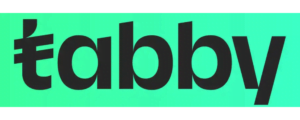Graphic design and web design are two fields that often get mixed up. It’s important to know the differences between them, whether you’re a designer or a business looking to hire one. In today’s digital world, the lines between graphic design and web design are getting smaller. Both fields are changing and influencing each other.
Understanding the differences between graphic design and web design is key. It helps designers and businesses make smart choices about their design needs. By learning about these differences, you can better grasp the unique challenges and opportunities in each field. This leads to more effective design solutions.
Understanding the Basic Concepts of Design Fields
Graphic design and web design have different main goals and ways of working. Both need creativity, but they use it in special ways for different needs.
What is Graphic Design?
Graphic design uses images, text, and print to send messages. Designers make logos, brochures, posters, and ads. They use Adobe Photoshop and Illustrator to make graphics that grab people’s eyes.
What is Web Design?
Web design makes websites and apps work well and look good. It mixes looks with function so users can easily use digital spaces. Web designers use HTML, CSS, and JavaScript to make sites that are both pretty and useful.
The Evolution of Both Design Disciplines
Digital tech has made graphic and web design more connected. Graphic design now includes digital work, and web design uses more visual stuff. Both fields keep changing as they meet new trends and tech, leading to more teamwork and blending.
Core Skills Required for Graphic Design vs Web Design
Graphic design and web design each need different skills. Graphic designers are great at typography, color, and layout. They make artwork and branding materials that grab attention.
Web designers, on the other hand, work on making websites easy to use and look good. They need to know HTML and CSS to design web pages well.
Graphic designers also know how to change and make images fit a brand. Web designers must know how to make websites work on all devices.
Even though they’re different, both fields need creativity, problem-solving, and good communication. These skills help designers work with clients and teams to create their ideas.
In the end, graphic design and web design both need a mix of technical skills and creativity. Whether it’s making a logo or a website, knowing these skills is key to success.
Essential Tools and Software Comparison
Choosing the right tools is key when comparing graphic design to web design. Each field needs special software to make beautiful visuals and working websites.
Graphic Design Software Suite
Graphic designers often use Adobe Creative Suite. It includes Photoshop for editing images, Illustrator for vector graphics, and InDesign for layouts. Affinity Designer is also popular for its strong features at a lower cost.
Web Design Development Tools
Web designers use Visual Studio Code and Sublime Text for coding. Sketch and Figma are favorites for prototyping and design because of their teamwork features. WordPress helps designers build and manage websites well.
Cross-Platform Solutions
Tools like Adobe XD help bridge the gap between graphic and web design. They let designers make interactive prototypes to share with developers. Sketch also has plugins that make it easy to move from design to web development.
| Category | Graphic Design Tools | Web Design Tools | Cross-Platform Solutions |
| Image Editing | Adobe Photoshop, Affinity Photo | N/A | Adobe XD |
| Vector Graphics | Adobe Illustrator, Affinity Designer | N/A | Sketch |
| Layout Design | Adobe InDesign | N/A | Figma |
| Coding | N/A | Visual Studio Code, Sublime Text | N/A |
| Prototyping | N/A | Sketch, Figma | Adobe XD, Sketch |
| Content Management | N/A | WordPress | N/A |
Creative Process and Workflow Differences
Graphic design and web design have their own paths. Graphic design starts with ideas, then sketches, and ends with final designs for print or digital. This ensures the design looks good and is clear.
Web design begins with a basic layout, then adds interactive parts. It’s tested to make sure it works well. This process keeps the site working on all devices and up-to-date.
Graphic designers work on things like logos and brochures. They focus on the look. Web designers, though, think about how people will use the site. They work with developers and UX experts.
| Aspect | Graphic Design | Web Design |
| Initial Stage | Conceptualization and sketching | Wireframing and layout planning |
| Development | Creating mockups and visual elements | Prototyping and user testing |
| Finalization | Finalizing designs for print or digital | Responsive design and ongoing maintenance |
| Collaboration | Working with clients and copywriters | Collaborating with developers and UX specialists |
Technical Requirements and Limitations
Understanding the technical demands is key in comparing graphic and web design. Each field has its own set of requirements that shape the final product.
Print vs Digital Constraints
Graphic designers work with color profiles like CMYK for print. They make sure colors look right on physical media. They also think about bleed areas and paper types for their designs.
Web designers focus on digital aspects. They consider screen sizes, browser compatibility, and load times. This improves the user experience.
Resolution and Format Considerations
In graphic design, high-resolution images and vector graphics are vital. They ensure designs look clear in any size. Web designers, though, must balance image quality with file size for fast loading times.
They use formats like JPEG and PNG, which are friendly to the web.
Responsive Design Requirements
Responsive design is key in web design. It means layouts that work well on all devices and screen sizes. This makes websites accessible and easy to use on desktops, tablets, and smartphones.
Graphic designers create static layouts. These don’t need the dynamic changes web design requires
| Aspect | Graphic Design | Web Design |
| Color Profiles | CMYK for print | RGB for screens |
| File Formats | High-resolution images, vector formats | JPEG, PNG, SVG optimized for web |
| Layout Flexibility | Static layouts | Responsive layouts |
| Compatibility | Various paper types and printing standards | Multiple browsers and devices |
.Career Opportunities and Market Demand
When deciding between graphic design and web design, career options play a big role. Graphic designers can work on brand identities, packaging, and print art. These roles are key in making visual ideas clear.
Web designers, on the other hand, focus on user experience and website functionality. With more online presence, the need for web designers is growing fast.
New roles blend skills from both fields. For example, UI/UX designers are in demand for their ability to create beautiful and functional interfaces.
Looking at job trends, both fields are growing. The Bureau of Labor Statistics says web design jobs will grow faster than graphic design jobs. This is due to more online shopping and tech advancements.
Knowing these trends helps in choosing between graphic design and web design. Both offer creative paths, but web design is seeing more growth and opportunities in today’s digital world.
| Field | Typical Roles | Job Growth Projection | Median Salary |
| Graphic Design | Brand Identity Designer, Packaging Designer, Print Production Artist | 3% growth | $53,380 per year |
| Web Design | UX Designer, Front-end Developer, Interaction Designer | 8% growth | $73,760 per year |
Salary Expectations and Industry Growth
When comparing graphic design vs web design, salaries differ based on your area of focus and experience. Knowing these differences is key for planning your career.
Graphic Design Compensation Trends
Graphic designers usually make between $45,000 and $70,000 a year. Your salary can change based on where you work, your skills in branding or illustration, and how long you’ve been designing. Senior designers in big cities often earn more.
Web Design Salary Ranges
Web designers can earn between $50,000 and $85,000 annually. Those who are good at user experience (UX) and responsive design are more sought after, which can lead to higher pay. Knowing the latest web technologies also plays a big role in your salary.
Freelance vs Full-time Prospects
Both graphic design and web design offer chances to work as freelancers or full-time employees. Freelancers can earn more based on their projects, potentially beating full-time salaries with the right clients. On the other hand, full-time jobs offer steady income and benefits but might not offer as much earning power as freelancing.
Looking to the future, both graphic design and web design are expected to keep growing. The increasing need for digital media means there will always be a demand for skilled designers. This makes both paths promising for your career’s future.
Project Scope and Deliverables
Graphic design and web design have different focuses. Graphic designers work on visual elements for branding and print. Web designers focus on digital platforms like websites and apps.
Graphic designers create branding packages, print ads, and marketing materials. They deliver logos, style guides, and print-ready PDFs. For instance, Nike uses graphic design for its logos and marketing.
Web design projects involve creating websites, apps, and email templates. Web designers deliver wireframes, prototypes, and HTML/CSS files. Apple uses web design for its user-friendly websites.
Graphic design projects usually have a clear end. But web design projects need ongoing updates for new tech and user feedback.
| Graphic Design | Web Design |
| Branding Packages | Website Creation |
| Print Advertisements | App Design |
| Packaging Design | Email Templates |
| Marketing Collateral | Wireframes & Prototypes |
| Deliverables: Logos, Style Guides, Print-Ready PDFs | Deliverables: HTML/CSS Files, CMS Implementations |
Learning Path and Education Requirements
Choosing the right path is key when deciding between graphic design and web design. Both fields have different educational paths to help you gain the skills you need.
Formal Education Options
For graphic design, a Bachelor of Fine Arts (BFA) is often chosen. It focuses on visual arts and creative skills. Web design, on the other hand, might benefit from Computer Science or Digital Media degrees. These cover both technical and design sides.
Design schools like Rhode Island School of Design and Savannah College of Art and Design offer specific programs. They help aspiring designers get ready for their careers.
Self-Learning Resources
Many people prefer learning on their own through online courses and tutorials. Sites like Coursera, Udemy, and Skillshare have a wide range of courses. They help you learn at your own speed and focus on what you need for your job.
Certification Pathways
Getting certified can boost your credibility in graphic design versus web design. Graphic designers might get Adobe Certified Expert (ACE) certifications. Web designers can get certifications in HTML, CSS, and JavaScript. These show you’re skilled and keep up with the latest trends.
| Learning Path | Graphic Design | Web Design |
| Formal Education | Bachelor of Fine Arts (BFA) | Bachelor’s in Computer Science |
| Self-Learning | Skillshare, Udemy | Coursera, Codecademy |
| Certifications | Adobe Certified Expert | Web Development Certifications |
Having a strong portfolio is key in both graphic design and web design. No matter your education, showing your work can open doors. Also, keep learning and stay up-to-date with new tech and design trends to succeed in these fast-changing fields.
Conclusion: Choosing Between Graphic Design and Web Design
Graphic design and web design are two different paths with their own challenges and opportunities. Graphic design is about making visual content for print and digital media. It requires skills in typography, color theory, and layout design.
Web design, on the other hand, is about building and keeping websites. It focuses on user experience, coding, and making sure websites work well on all devices.
Both fields rely on visual communication and creativity. Graphic designers work on projects like logos and brochures. Web designers focus on website layouts and interactive elements.
Choosing between graphic design and web design depends on what you like and what you want to achieve in your career. If you love creating eye-catching images, graphic design might be for you. If you enjoy coding and making interactive websites, web design could be the better choice.
Many designers are now learning both graphic and web design. This makes them more versatile and opens up more job opportunities. It also helps them approach visual communication in a more complete way.
To figure out which path to take, try online courses and get advice from experienced designers. Also, work on projects in both areas. This will help you see which field fits your strengths and interests better.












